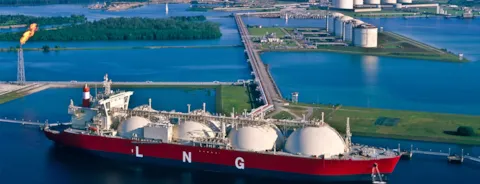Modelling LNG terminals
A comprehensive, detailed and accurate performance simulation analysis of both gas plants and LNG terminals is an invaluable tool in assessing the performance that can be obtained from LNG production assets. Such studies should, ideally, be initiated early in the project lifecycle – either early in FEED or even during pre-FEED evaluation of alternative options when the cost of modifications is low.
But how should parameters such as reliability of equipment, design, available storage tanks and transport logistics operations be integrated?
RAM analysis will help make certain that available capital is used effectively by ensuring that investment is limited only to what the facility can produce where decisions can be justified using a quantified, risk-based approach.
The challenge here is basically to account for the dynamic behaviour within LNG terminal operation. This calculation must be conducted measuring the continuous changes in the state of the system over its expected life. Apart from that, the analysis must be comprised of many key parameters such as:
- Equipment configurations
- Operational constraints
- Maintenance strategies
- Availability of maintenance resources
- Tank storages size
- Transport logistics operations
Clearly, any attempt to calculate performance characteristics for such situations by deterministic methods (i.e. steady state availability, fault trees, reliability block diagram techniques) is virtually impossible.
The simulation technique is based on an event-driven algorithm which is used to create lifecycle scenarios of the system under investigation. Simulation techniques can provide a distribution of results over the life of the system such as productivity profile. In comparison, the majority of deterministic methods provide a single expected value, such as time to first failure, expected number of failures, etc. More insight into system behaviour can be extracted from distributed results, and the user can also gain insight into the consistency of performance associated with the system.
By studying performance results and how they respond to the alteration of specific parameters in the design or its logistics it is possible to optimise the system, taking into account given constraints. This approach offers a number of important benefits:
- Large and complex systems can be analysed to a level of detail unobtainable by other methods
- It can be used in all stages of an asset’s life, from optimising a system in the design phase to improving decisions in the operational phase
- The concept is simple and easy to use – there is no need to be a specialist
- The approach is cost-efficient in terms of man-hours required to produce significant results
- A distinct advantage of using performance simulators is that the user gets a true ‘feel’ for the system being simulated, and learns quickly about its good points and bad points. These may relate to the design itself or its associated operations. Such insight helps the user to improve the system
- Design changes can be very quickly assessed with a basic model. The proverbial question ‘What happens if?’ can be answered. Optimisation of performance is a fairly rapid process
For example, KOGAS (abbreviation for Korea Gas Corporation) has grown to become the world’s largest LNG importer. KOGAS currently operates three LNG terminals and a nationwide pipeline network spanning over 2,739 km, supplying LNG to power generation plants, gas-utility companies and city gas companies throughout Korea. They are using RAM models to find the best design of LNG plants and satisfy stakeholders’ technical requirements.
Author: Victor Borges
9/8/2014 6:49:02 PM
